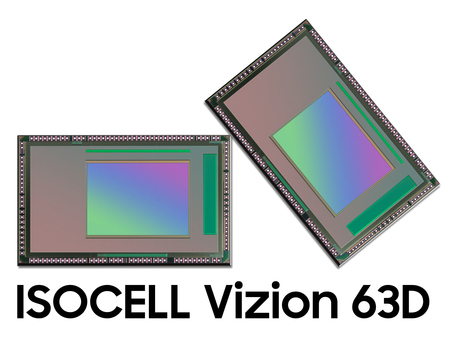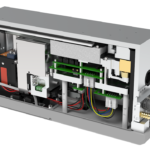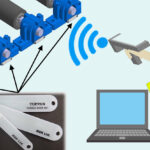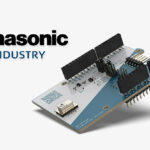ASIA ELECTRONICS INDUSTRYYOUR WINDOW TO SMART MANUFACTURING
Samsung Unveils New Sensors Tailored for Robotics, XR
Samsung Electronics Co., Ltd. introduces two new ISOCELL Vizion sensors — the ISOCELL Vizion 63D time-of-flight (ToF) sensor and the ISOCELL Vizion 931 global shutter sensor. First introduced in 2020, Samsung’s ISOCELL Vizion lineup includes ToF and global shutter sensors. Specifically, they were designed to offer visual capabilities across an extensive range of next-generation mobile, commercial and industrial use cases.

“Engineered with state-of-the-art sensor technologies, Samsung’s ISOCELL Vizion 63D and ISOCELL Vizion 931 will be essential in facilitating machine vision for future high-tech applications like robotics and extended reality (XR),” said Haechang Lee, Executive Vice President of the Next Generation Sensor Development Team at Samsung Electronics. “Leveraging our rich history in technological innovation, we are committed to driving the rapidly expanding image sensor market forward.”
ISOCELL Vizion 63D: Tailored for Capturing High-resolution 3D Images with Exceptional Detail
Similar to how bats use echolocation to navigate in the dark, ToF sensors measure distance and depth by calculating the time it takes the emitted light to travel to and from an object.
Particularly, Samsung’s ISOCELL Vizion 63D is an indirect ToF (iToF) sensor. It measures the phase shift between emitted and reflected light to sense its surroundings in three dimensions. With exceptional accuracy and clarity, the Vizion 63D is ideal for service and industrial robots. It also suits XR devices and facial authentication where high-resolution and precise depth measuring are crucial.
The ISOCELL Vizion 63D sensor is the industry’s first iToF sensor with an integrated depth-sensing hardware image signal processor (ISP). With this innovative one-chip design, it can precisely capture 3D depth information without the help of another chip. Thus, this enables up to a 40% reduction in system power consumption compared to its predecessor. Also, the sensor can process images at up to 60fps in QVGA resolution (320×240). This is a high-demand display resolution used in commercial and industrial markets.
The ISOCELL Vizion 63D achieves high Video Graphics Array (VGA) resolution (640×480) within a 1/6.4” optical format. This was based on the industry’s smallest 3.5µm pixel size in iToF sensors. Specifically, this feature makes it an ideal fit for compact, on-the-go devices.
Thanks to backside scattering technology (BST) that enhances light absorption, the Vizion 63D sensor boasts the highest level of quantum efficiency in the industry, reaching 38% at an infrared light wavelength of 940nm. This enables enhanced light sensitivity and reduced noise, resulting in sharper image quality with minimal motion blur.
Moreover, the ISOCELL Vizion 63D supports both flood (high-resolution at short-range) and spot (long-range) lighting modes. As a result, it significantly extends its measurable distance range from its predecessor’s 5 meters to 10.
ISOCELL Vizion 931: Optimized for Capturing Dynamic Movements Without Distortion
The ISOCELL Vizion 931 is a global shutter image sensor tailored for capturing rapid movements without the “jello effect”. Unlike rolling shutter sensors that scan the scene line by line from top to bottom in a “rolling” manner, global shutter sensors capture the entire scene at once or “globally,” similar to how human eyes see. This allows the ISOCELL Vizion 931 to capture sharp, undistorted images of moving objects. This makes it well-suited for motion-tracking in XR devices, gaming systems, service and logistics robots as well as drones.
Designed in a one-to-one ratio VGA resolution (640×640) that packs more pixels in a smaller form factor, the ISOCELL Vizion 931 is optimal for iris recognition, eye tracking as well as facial and gesture detection in head-mounted display devices like XR headsets.
Also, the ISOCELL Vizion 931 achieves the industry’s highest level of quantum efficiency, delivering an impressive 60% at 850nm infrared light wavelength. The integrated Front Deep Trench Isolation (FDTI) made this feat possible. Specifically, it places an insulation layer between pixels to maximize light absorption, in addition to the BST method used in the ISOCELL Vizion 63D.
The Vizion 931 supports multi-drop that can seamlessly connect up to four cameras to the application processor using a single wire. With minimal wiring required, the sensor provides greater design flexibility for device manufacturers.
Samsung ISOCELL Vizion 63D and ISOCELL Vizion 931 sensors are currently sampling to OEMs worldwide.




